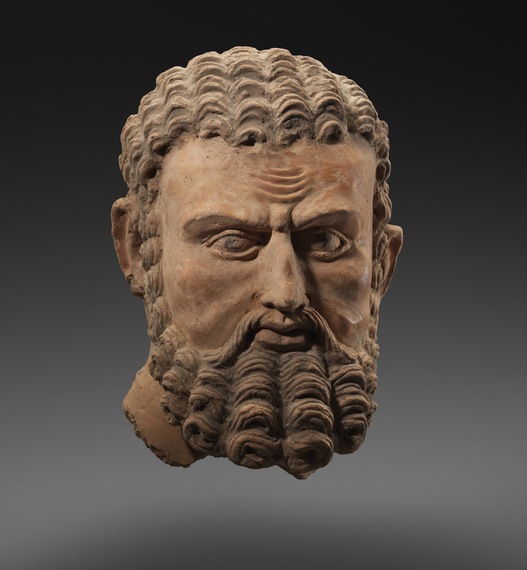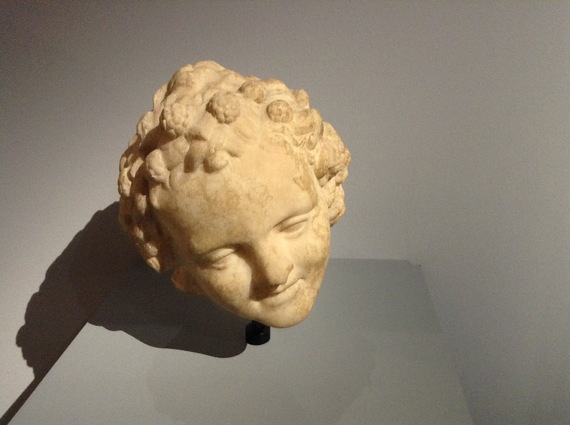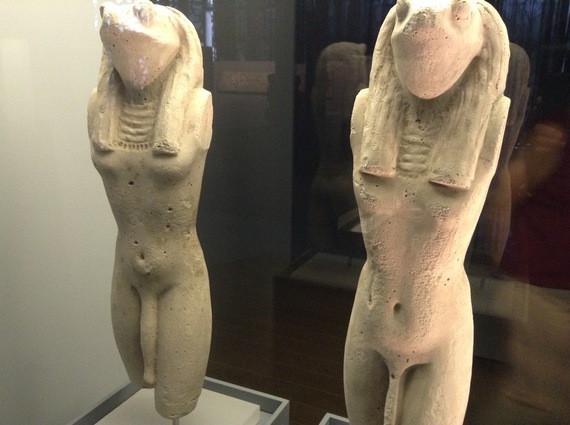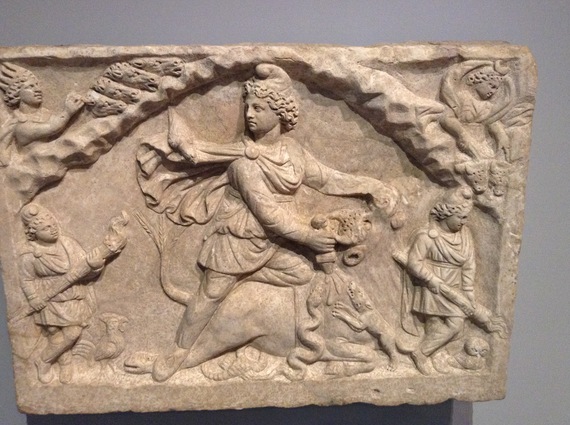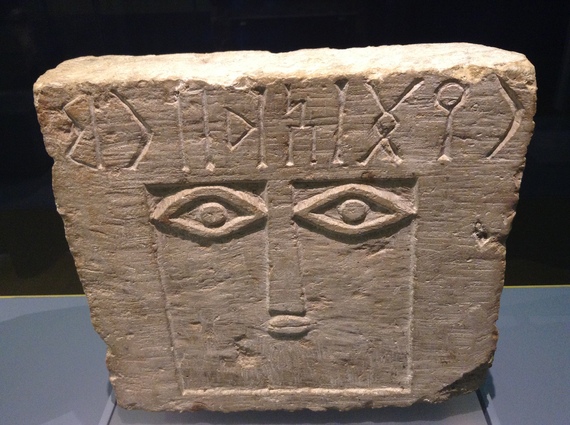Dionysus, that incomparable symbol of drink and revelry was the only deity that my normally sober and demure father ever enthusiastically embraced, in a column he wrote for his college paper. Pity he couldn't have stuck around to visit this year's second and current exhibition on Mediterranean religions at Marseille's MuCEM museum, itself a sort of contemporary temple dedicated to Mediterranean memory and culture. Dionysus pops up everywhere among the 200 pieces from ancient Egypt, Greece and Rome gathered together this summer at the MuCEM under the rubric Divine Migrations.
Young Dionysus
It shows off those divinities that arose at the threshold of what came to be Western Civilization--Isis, Osiris, Alexander, Hercules, Poseidon, Artemis, Hera, Zeus and their lesser cousins: the whole pantheon of deities that our ancestors created to guide themselves through toil, temptation and tribulation, from lightness into dark, from the descent into death to the promise of eternal resurrection. But it is the second word in exhibition's title--migration--that is critical. These earliest of gods underwent relentless migration and transition, changing their names and the frontiers of empire demanded--and sometimes changing their "sex" or occasionally merging with sacred beasts, cats and lions, horny satyrs with human heads, fierce centaurs combining man and horse and fearsome minotaurs with the legs of men and the heads of bulls.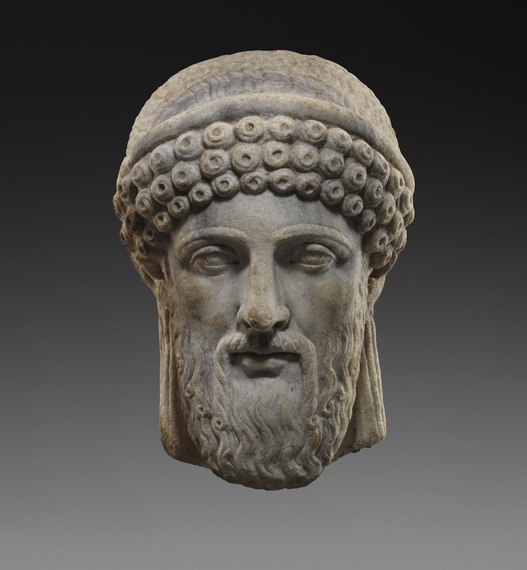
Elder Dionysus Photo (c) Gandur Fondation pour l'art, Geneva
Dionysus, surely the comeliest of them all, seems to have emerged from the older Egyptian god Osiris, who was ripped apart by the Titans, then stitched back together by his beloved Isis, known in the Greek version as Demeter (or Dimiter). In the decidedly kinkier Greek version, Zeus snatches the infant (or sometimes just its thumping heart) from the belly of Dionysus's human mother, Semelle, and stitches the fetus into his own massive thigh from which after nine months he springs forth as the irresistible boy-god, Dionysus. The back story to this grotesquely successful abortion is still more interesting, since the whole thing was set up by Zeus's jealous wife Hera who had become upset over Zeus's lustful obsession with the Semelle. Hera convinced Semelle to seduce the hapless Zeus, knowing full well that no mortal could survive witnessing directly the all-powerful Zeus, much less survive the exquisite torture of being impregnated by him. Of course Semelle perished, but to Hera's dismay, the zygote survives in Zeus's thigh where he grew into Dionysus, clearly a confusing gender tale for this most powerful of all Gods.
Unlike the religions of the book--Judaism, Christianity and Islam--that each sought to violently suppress the ancient polytheisms and impose singular wrathful gods on the Mediterraneans, these original deities were far more supple in their response to human wandering.
Each, as the exhibit well illustrates, eagerly borrowed from the other, Greeks from Egyptians, Egyptians from Greeks, Romans from everyone they dared to conquer, all in all generating wondrous deities of multiple names and ancestries, of whom Osiria/Dionysus is simply the most captivating. There are fifteen varieties of Dionysus in the MuCEM exhibit.
The Romans particularly galavanted far and wide and indeed deeper into the east than any of their predecessors, both as traders and as conquerors. Artifacts of the Roman legions continue to show up on the shores of the Black Sea where the legions came across the Persian cult of Mithras who daily guided the sun across the landscape and whose effigies were returned to Rome and integrated into the Roman pantheon.
Persian Zithra
Mithras proved exceptionally popular throughout the Empire as far north as the Rhineland and the western limits of Gaul, or contemporary France.
Hercules, the most powerful of all Roman beings (Heracle to the Greeks), known for slaying the hydra and holding up the world for Atlas to measuere, was surely the greatest of adventurers following in the earlier Egyptian footsteps of Alexander the Great. As curator Myriame Morel-Deledallel notes Hercules heirs brought the ancient Occident together with eastern Buddhism. "contributing to the creation of a new style, that of Gandhara across India and Pakistan," where the hybrid Vajrapani-Heracles remains "a protector of the Buddha."
The fluidity of all these earlier deities and their identification with adventure and pleasure proved deeply distressing to the people of the book, whose stories occupy another temporary exhibit at the MuCEM, (Shared Sacred Sites, HuffPo, April 30). Among the three contemporary monotheist religions, surely Christianity and Islam, each obsessed with murderous purifying crusades, there is no room for either the generosity of their predecessors or for the reflection of complex human psychology deeply inscribed in the tales of Zeus, Osiris, Demeter, Diana, Hercules all possessed of powerful frailties. Textbook versions of ancient history in my youth nearly always included passing warnings about how bloody these ancients were, how chaotic were their lives, but seldom did they note the darkest condemnation the Greeks and Romans could suffer. For them Hell was not to be cast into a lake of eternal flames but to be abandoned to a state of unrelieved boredom.

